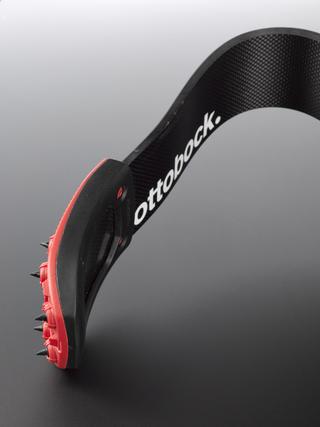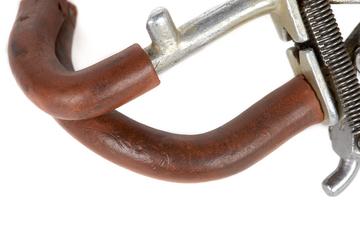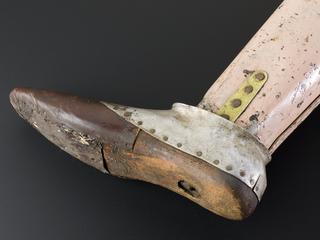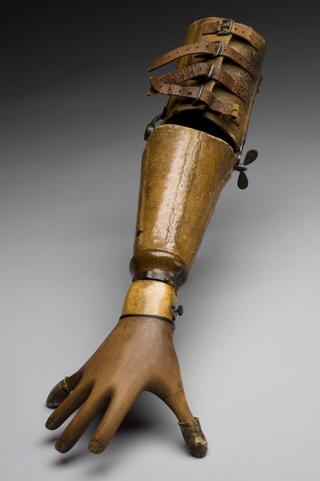
Jointed metal leg frame, England, United Kingdom, 1960-1975
- maker:
- Meredith Wooldridge Thring




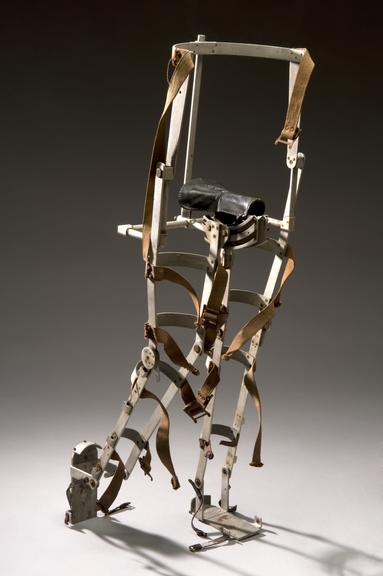



Jointed metal leg frame to relieve the weight on the joints of the wearer, by Prof. Meredith Wooldridge Thring, 1960-1975.
Professor W. Thring (1915-2006) named his fully adjustable metal leg frame an ‘exo-skeleton’. It relieves pressure on the joints of people with arthritis. The user is strapped into the metal frame and rests their weight upon the adapted bicycle seat. The frame supports the joints and is hinged at all the same points as a human body. This allows a full range of movement. Thring was Professor of Mechanical Engineering at Queen Mary College, London University during the 1960s. He set up a Design and Invention workshop there. Thring was one of the first people to work on domestic robots. As a keen inventor he created several aids including an artificial hand with rotating wrist (1997-801).
Details
- Category:
- Orthopaedics
- Object Number:
- 1997-800
- Measurements:
-
overall: 1270 mm x 420 mm x 260 mm,
- type:
- mobility aid
- credit:
- Thring, Meredith Wooldridge
